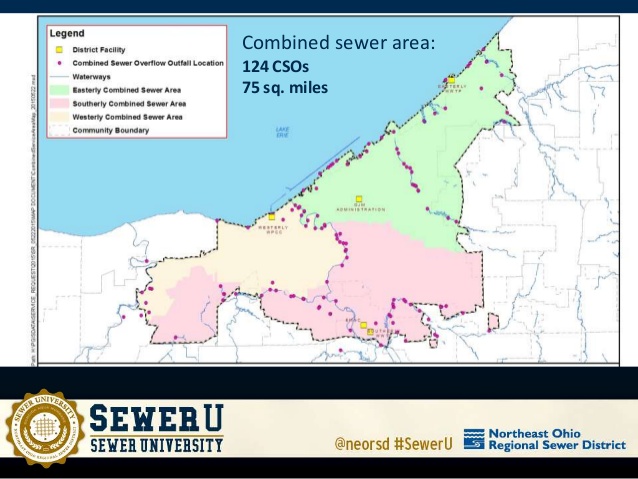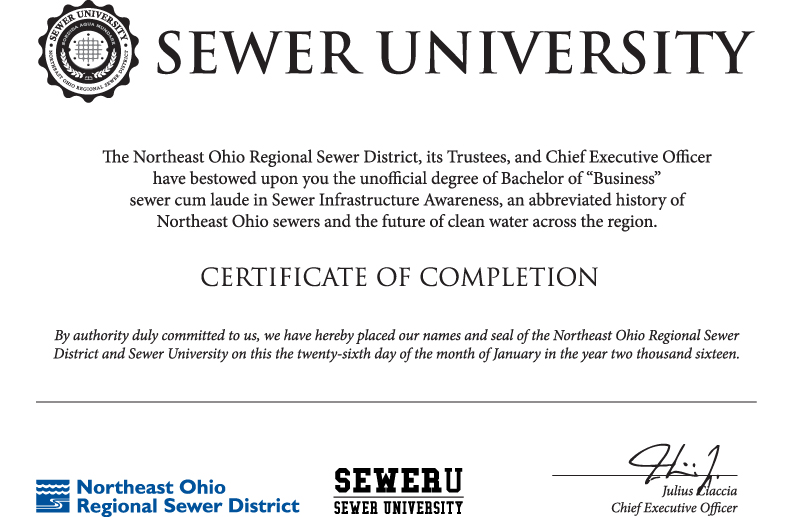Interested in Infrastructure?
Get Infrastructure articles, news and videos right in your inbox! Sign up now.
Infrastructure + Get AlertsEducating the public and key stakeholders plays a vital role for any wastewater utility as shared responsibility helps keep a system operating effectively. That’s why the Northeast Ohio Sewer District launched Sewer U, where participants graduate "sewer cum laude."
According to John Gonzalez, NEORSD manager of communications, the half-day event is intended “to give a historical perspective as to how and why the system works as it does.” Gonzalez says 110 individuals registered for the first-ever session in November, including citizens, public officials, vendors and water industry professionals.
“Attendance was really across the board,” Gonzalez notes.
NEORSD operates three wastewater treatment plants and related water pollution control facilities on Lake Erie and the Cuyahoga River in the Greater Cleveland area, serving more than a million people in 61 suburban communities and the City of Cleveland, treating more than 90 billion gallons of wastewater annually. The district was formed in 1972, but some of the sewers in the Cleveland area date to the 1860s.

Sewer U was led by Frank Greenland, NEORSD’s director of watershed programs and a 27-year sewer district veteran. A two-hour discussion and Q&A session included the history of sewers in northeast Ohio as well as information on why the Cuyahoga River burned many times before 1969. Greenland also talked about how dirty water gets cleaned, stormwater issues, infrastructures and the costs of clean water.
According to Gonzalez, Greenland’s style is set up like a classroom, but in a very informal way. “His tone and personality is almost like telling a story.”
“I’m very committed to clean water and passionate about the Sewer District’s work to keep our Great Lake great,” Greenland says. “I’m happy to lead this very important discussion and use my experience to educate others about important water-quality issues.”
Christian Maier, assistant director of Public Works for the City of Shaker Heights, Ohio, attended the event. He adds, “This was a good introduction to sewers, their history in Cleveland and related challenges this region of Ohio faces. The district did a good job in explaining that these challenges are at multiple levels (regional, municipal and private/residential) without being overbearing.
“While NEORSD has the main collections system, they understand the locally owned sewers have a direct impact on their assets. Similarly, residents need to be held accountable for the sewers on their property; this was presented without being overly assertive but the importance was not lost.”
Maier also appreciated that Sewer U provided a brief overview on NEORSD initiatives, such as Sanitary Sewer Evaluation Studies, the Community Grant/Lease program and the Stormwater Management program.
Since Maier works for a municipality, he says he recognized that NEORSD “wants to be a partner with the municipalities. This relationship provides a tremendous knowledge base and skill set to the local; conversely, the district can receive valuable information that may impact their assets.”
In addition to the classroom portion, two tours were also offered — one of the Sewer District’s laboratory and another of the Southerly Wastewater Treatment Plant in Cuyahoga Heights, the largest in the State of Ohio.
Due to the initial success — gauged on attendance and feedback — NEORSD hosted another Sewer U session in January, and Gonzalez says the district intends to plan more.








